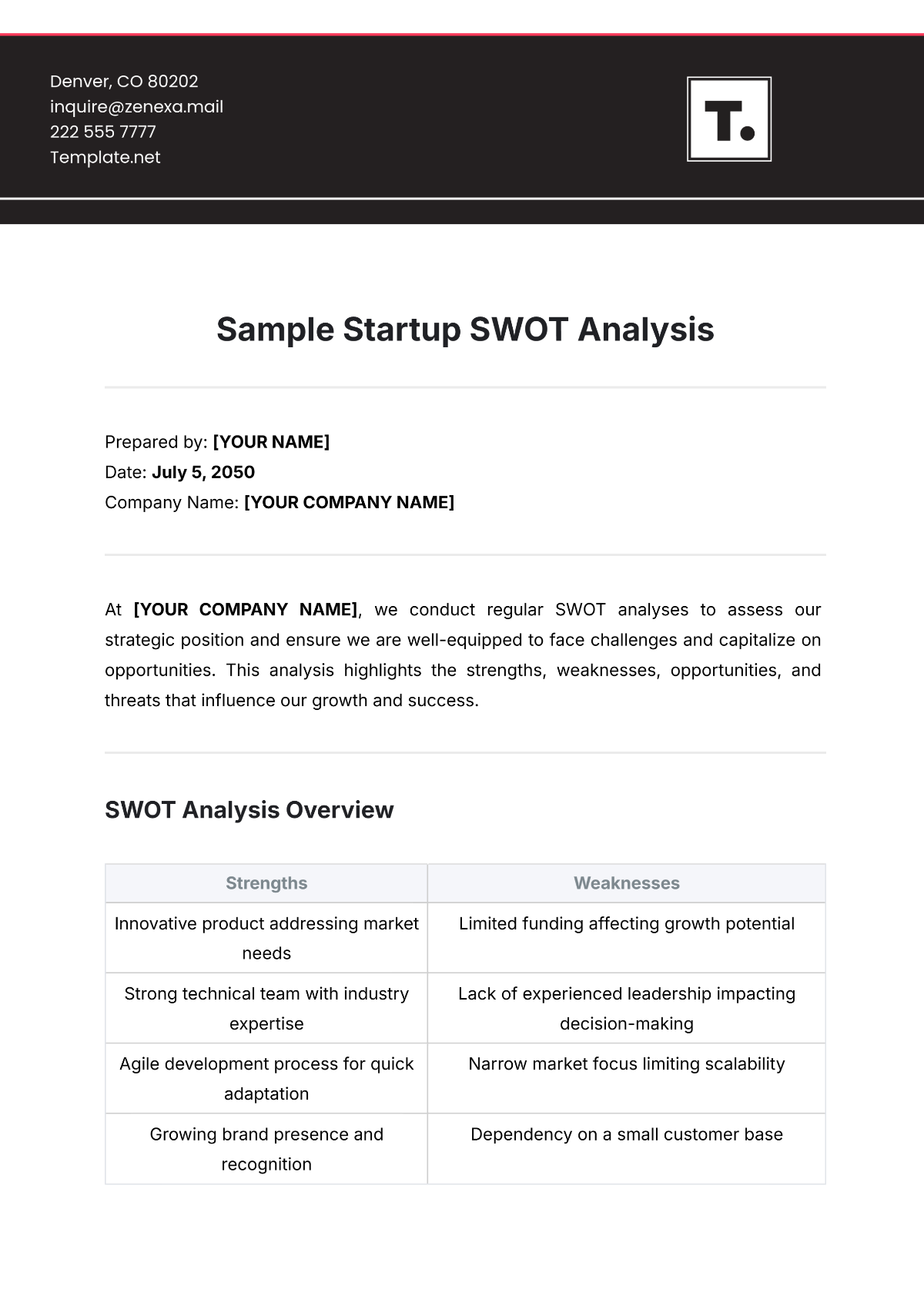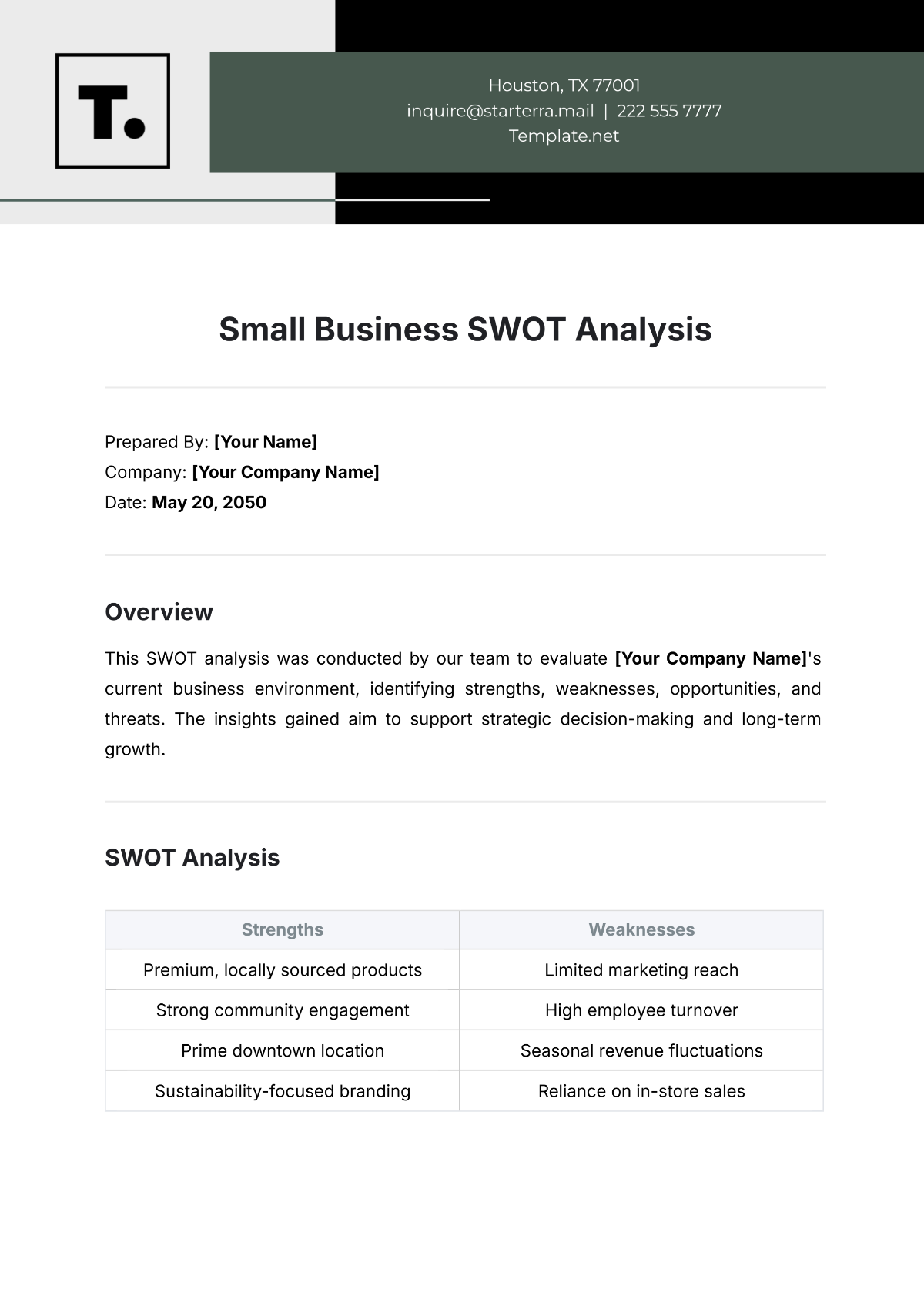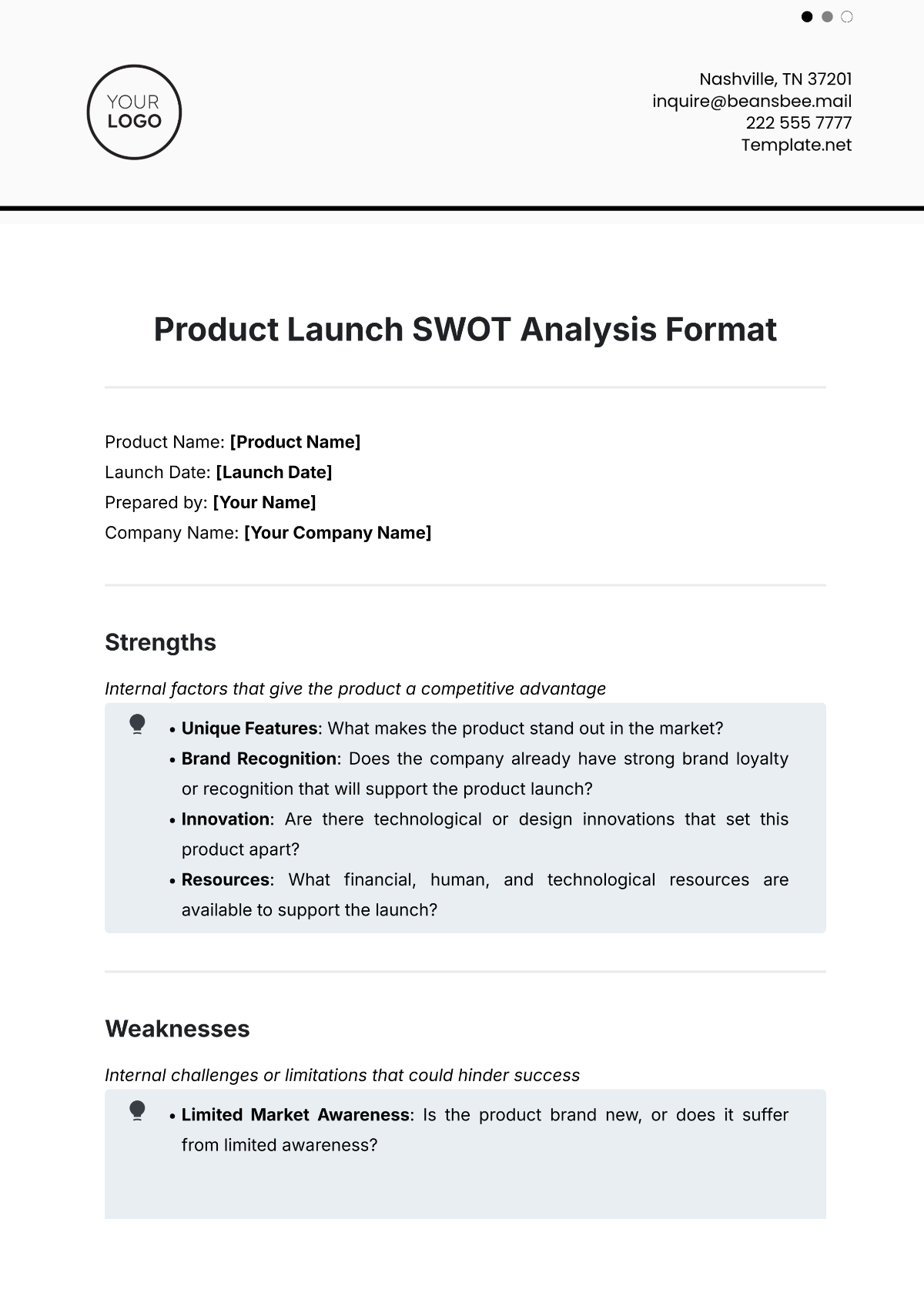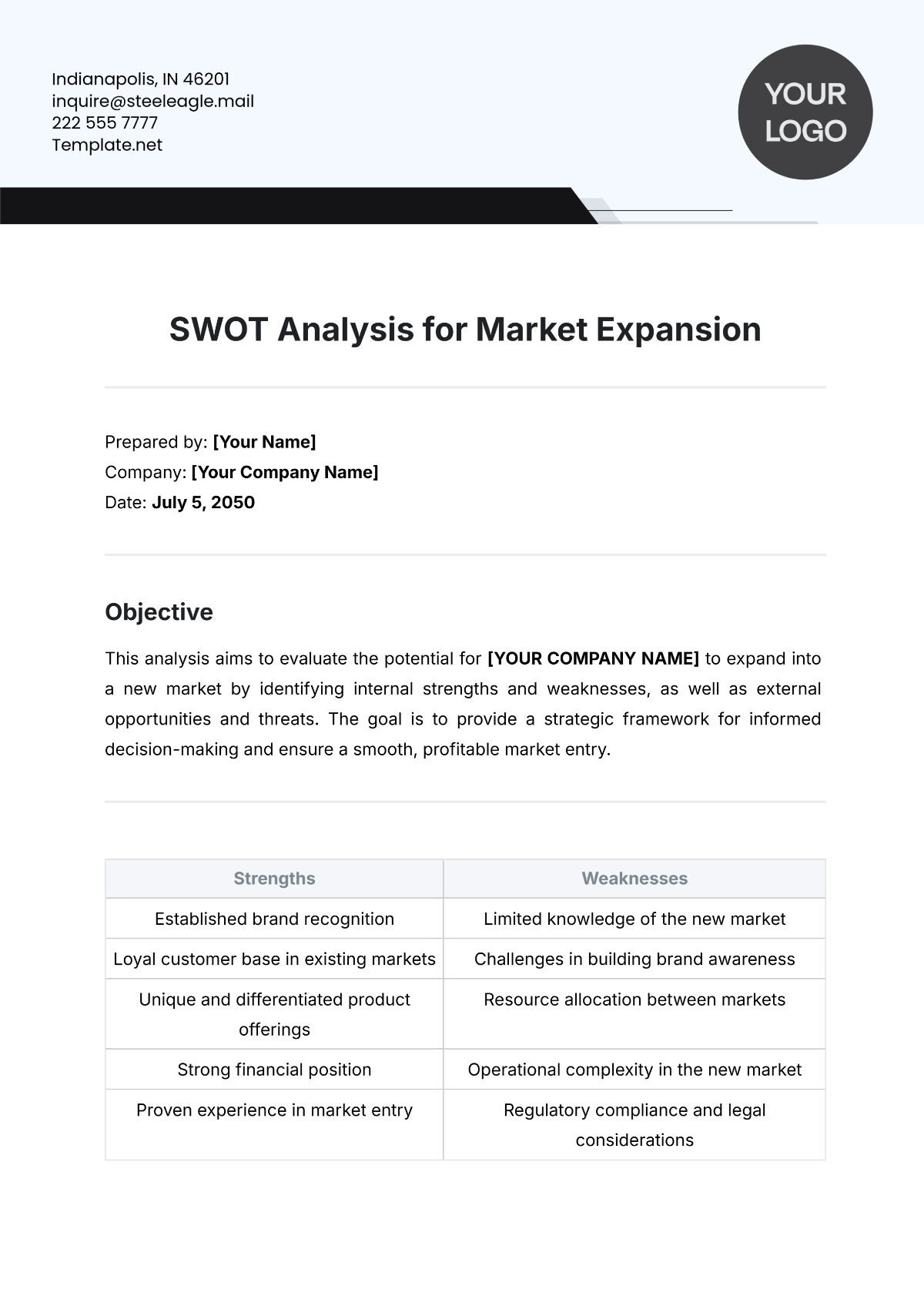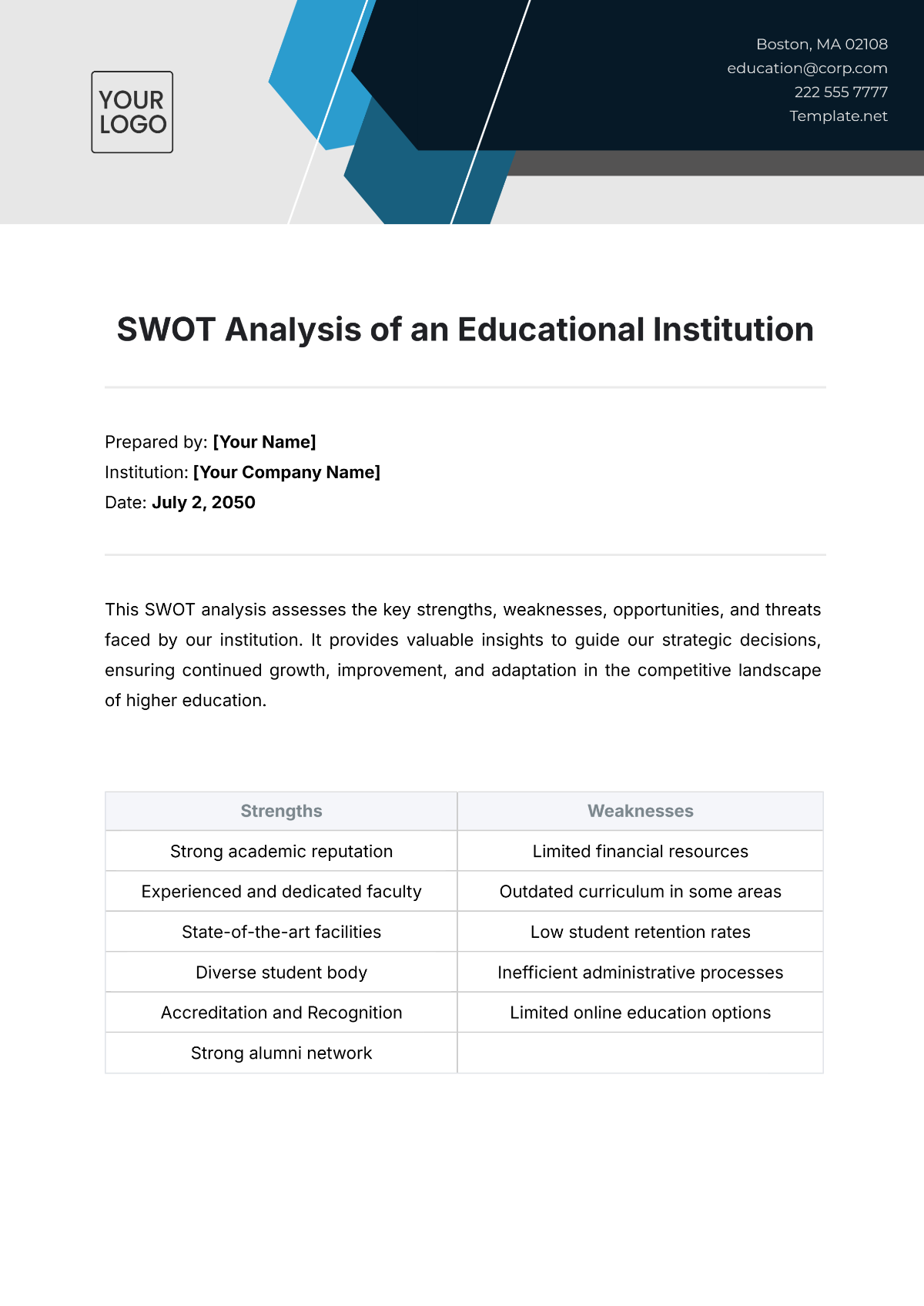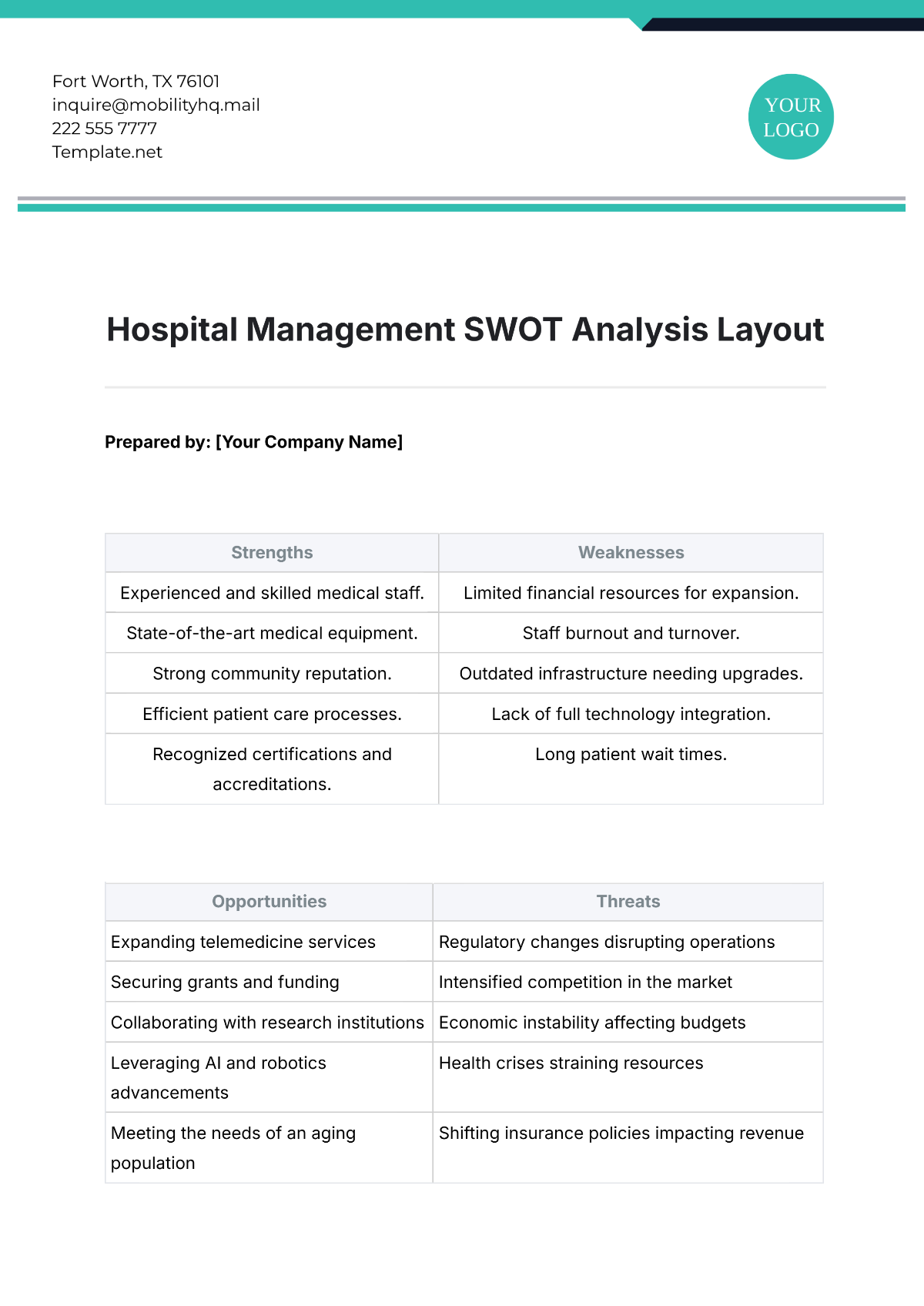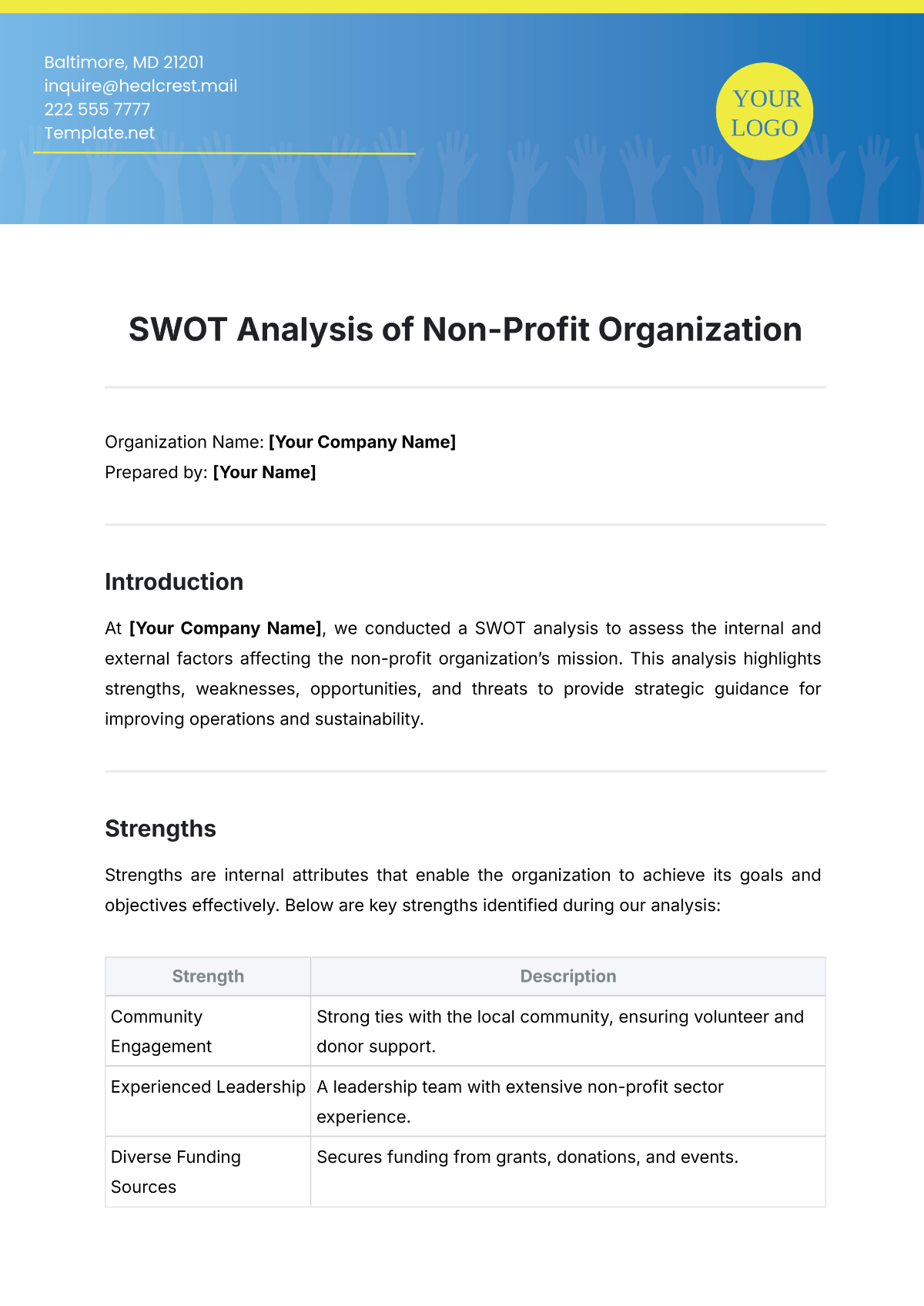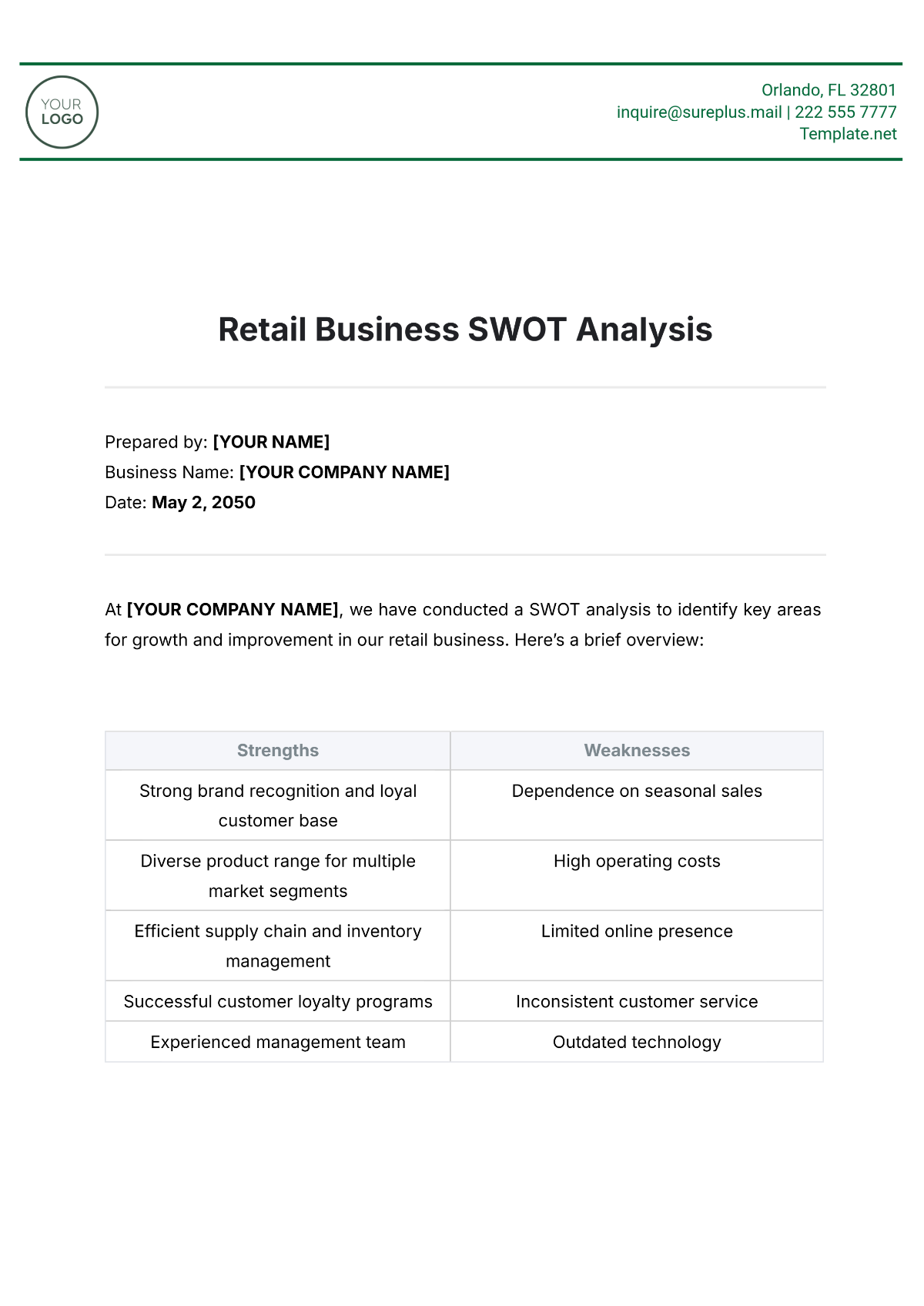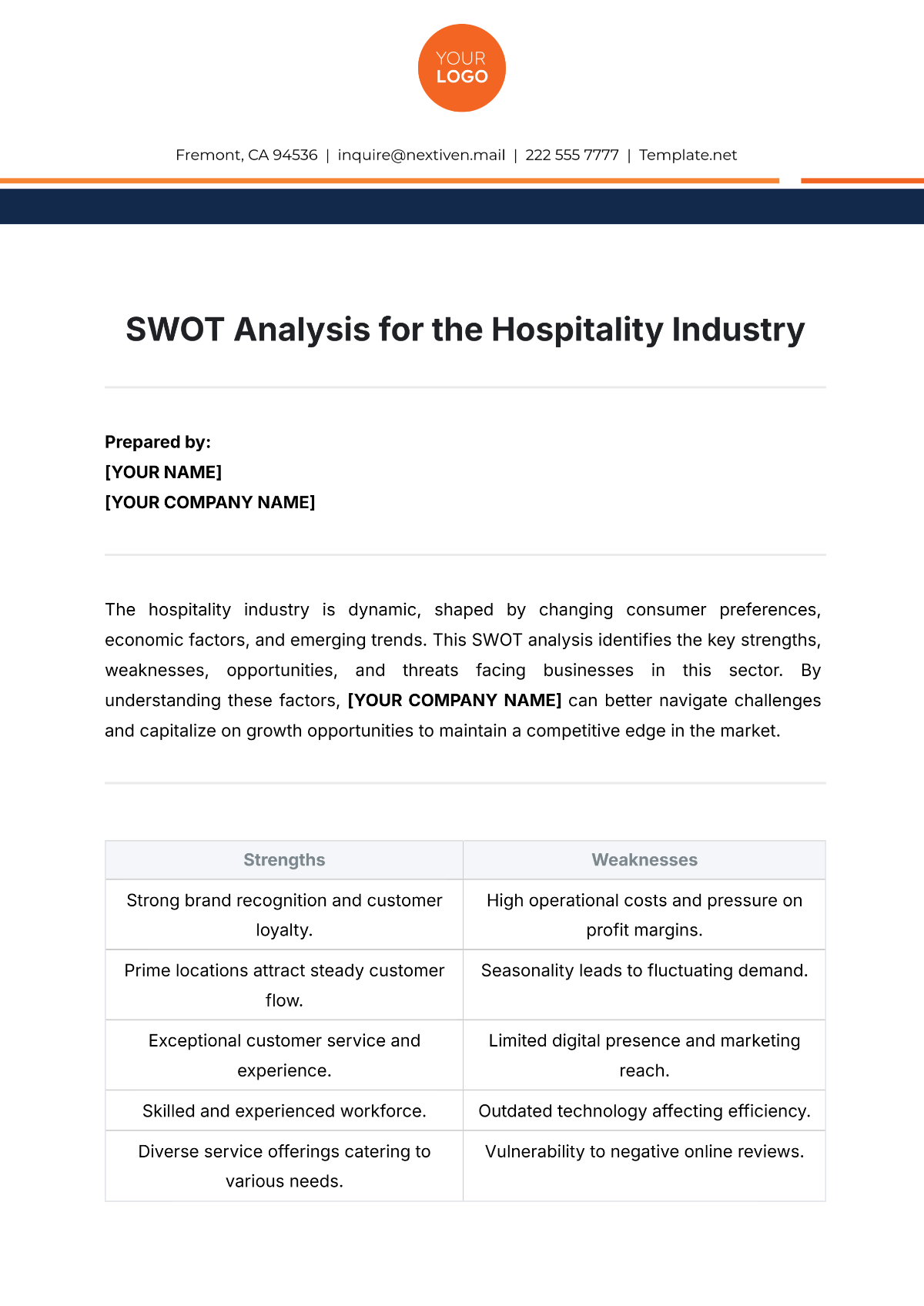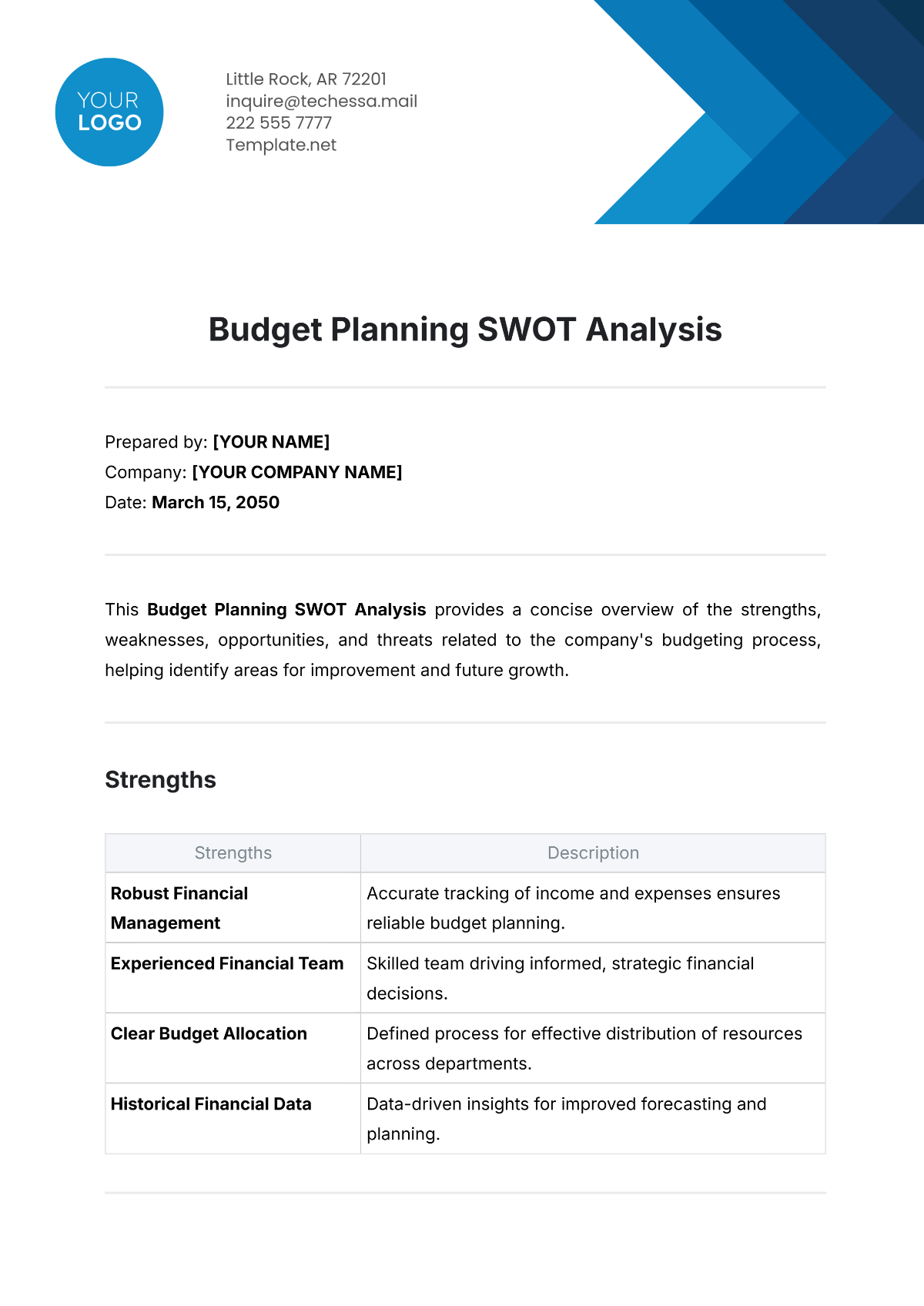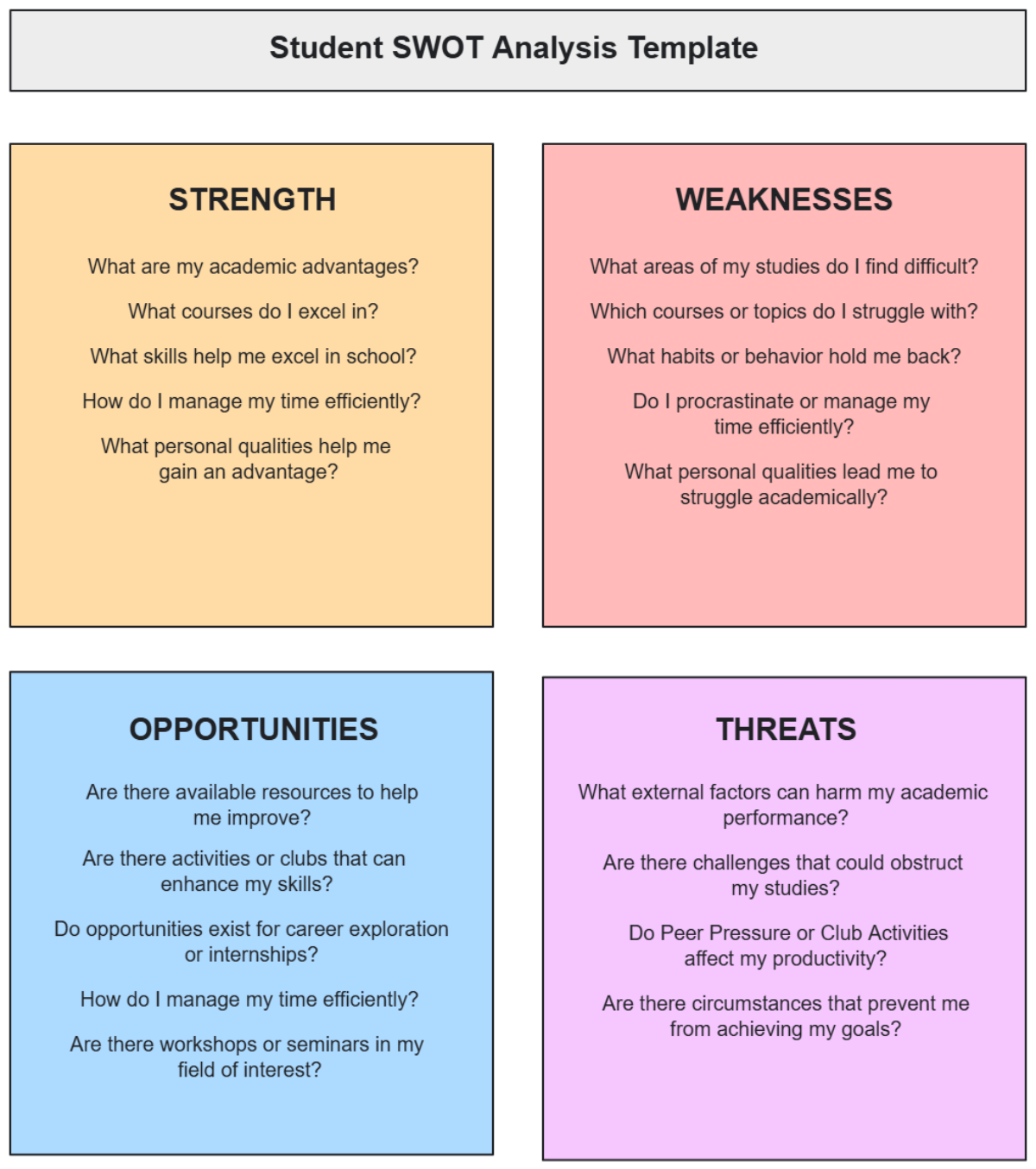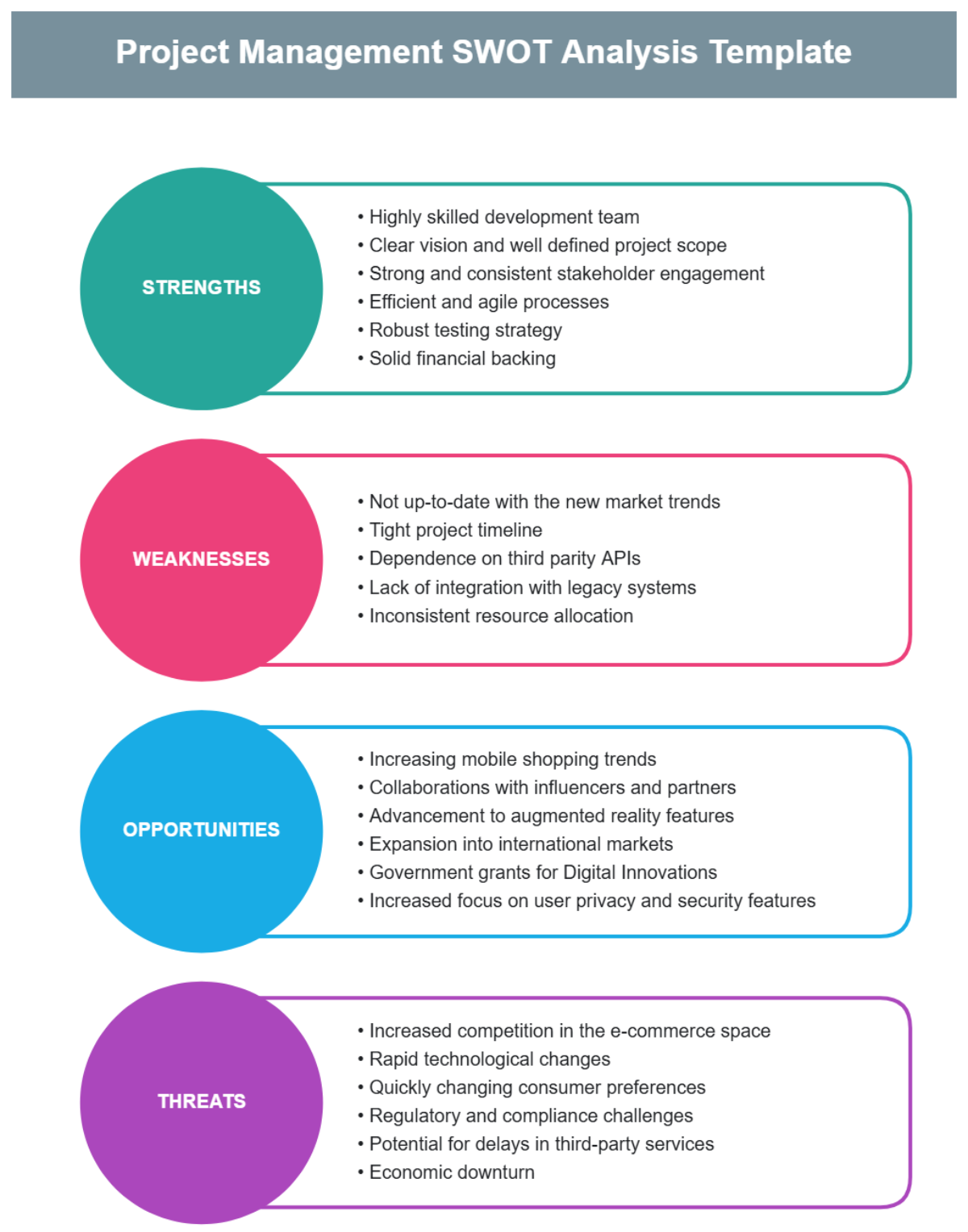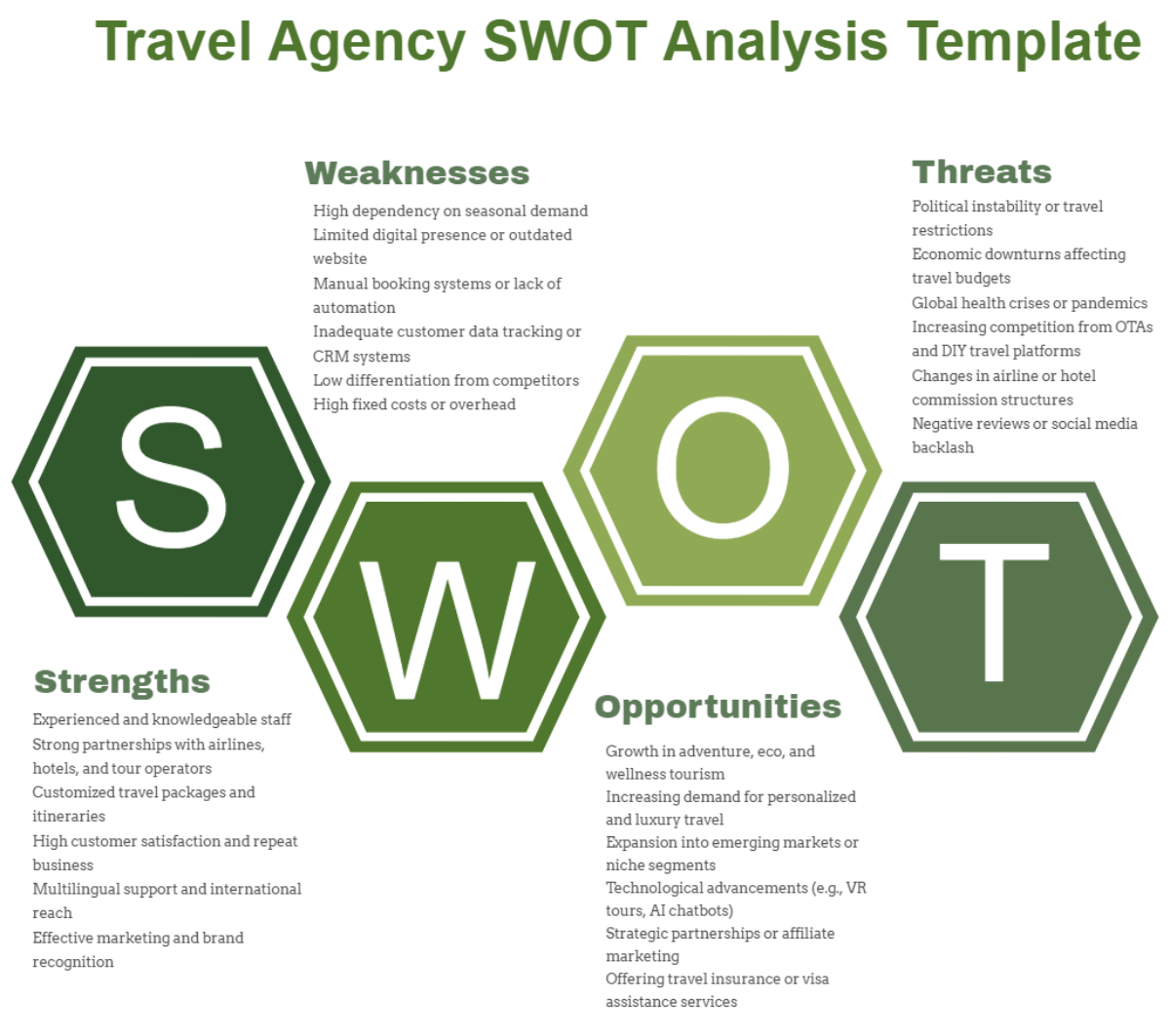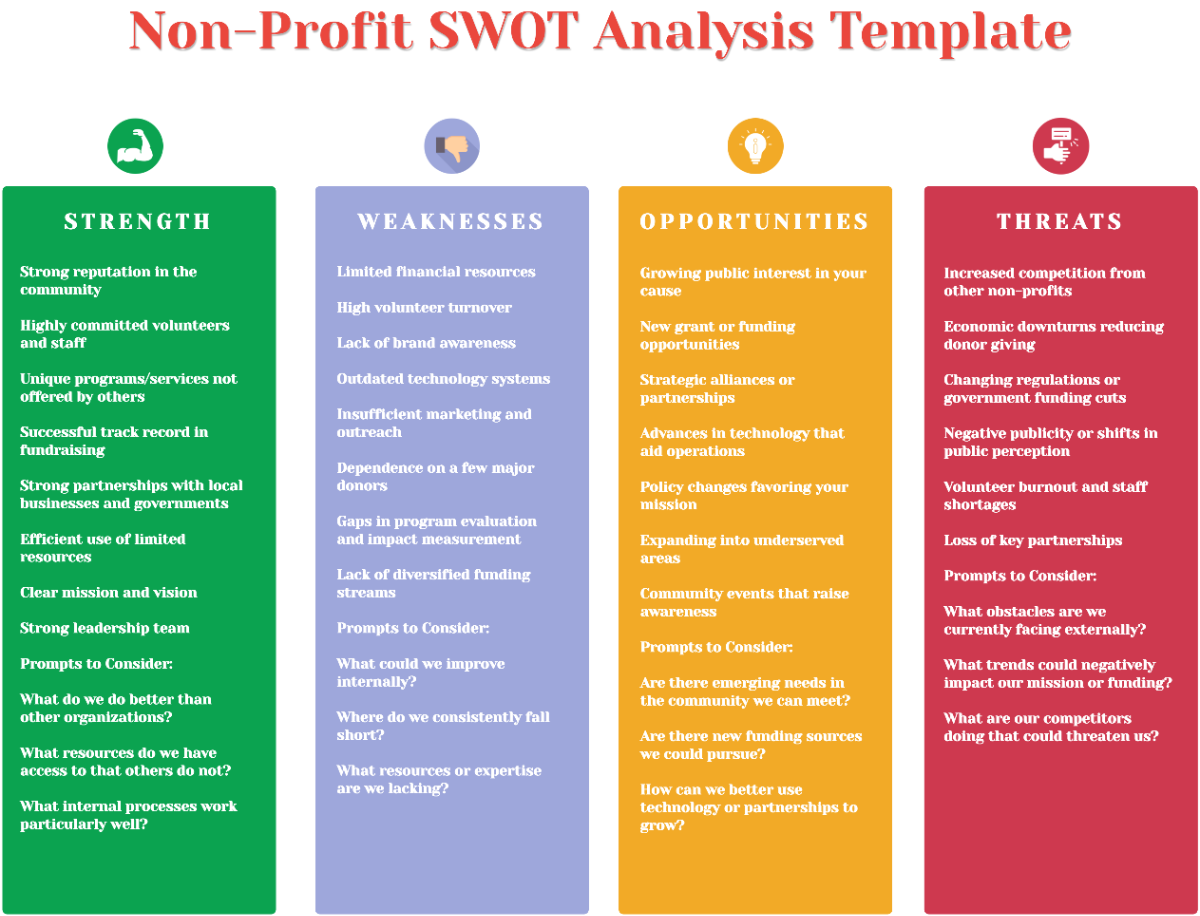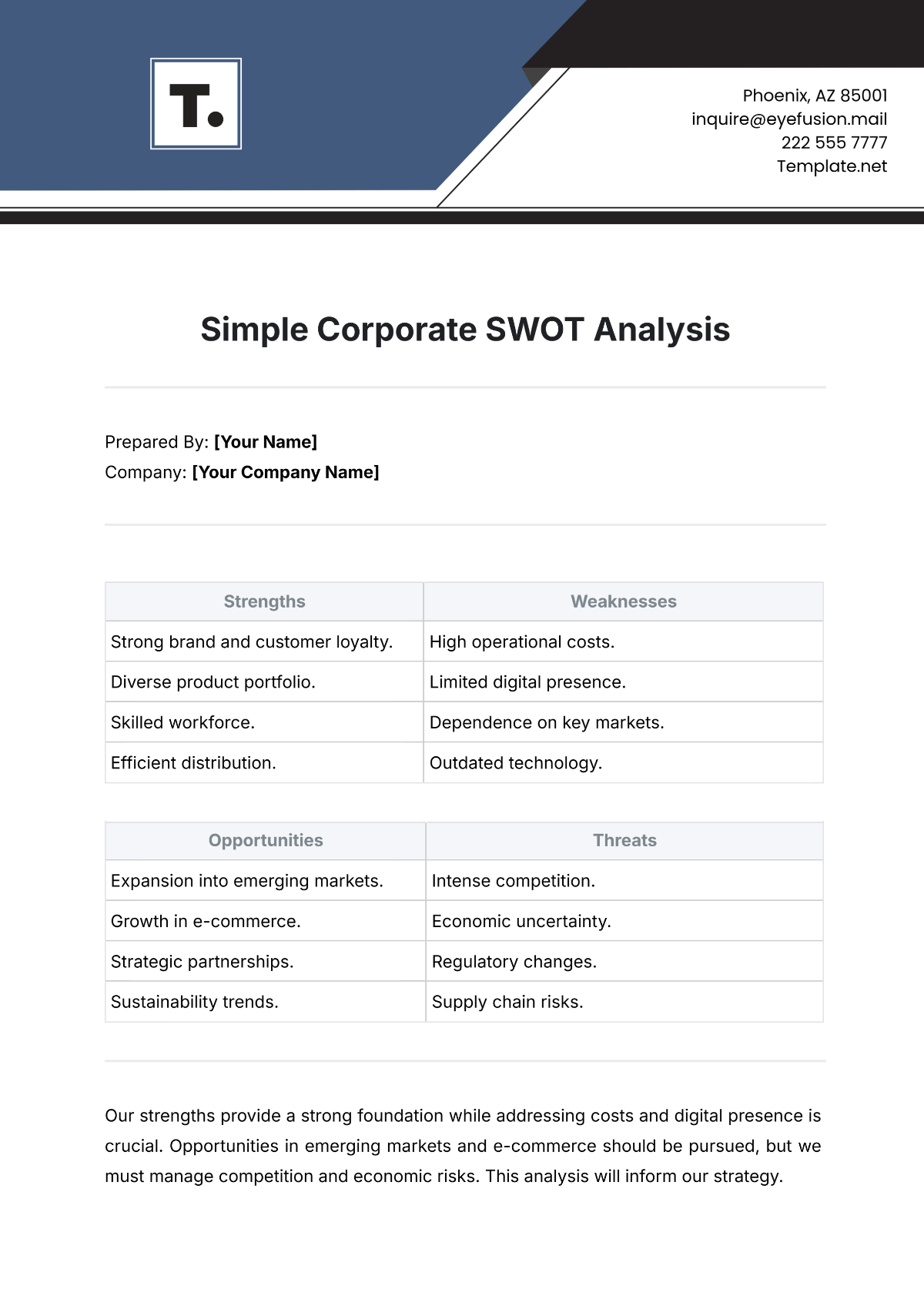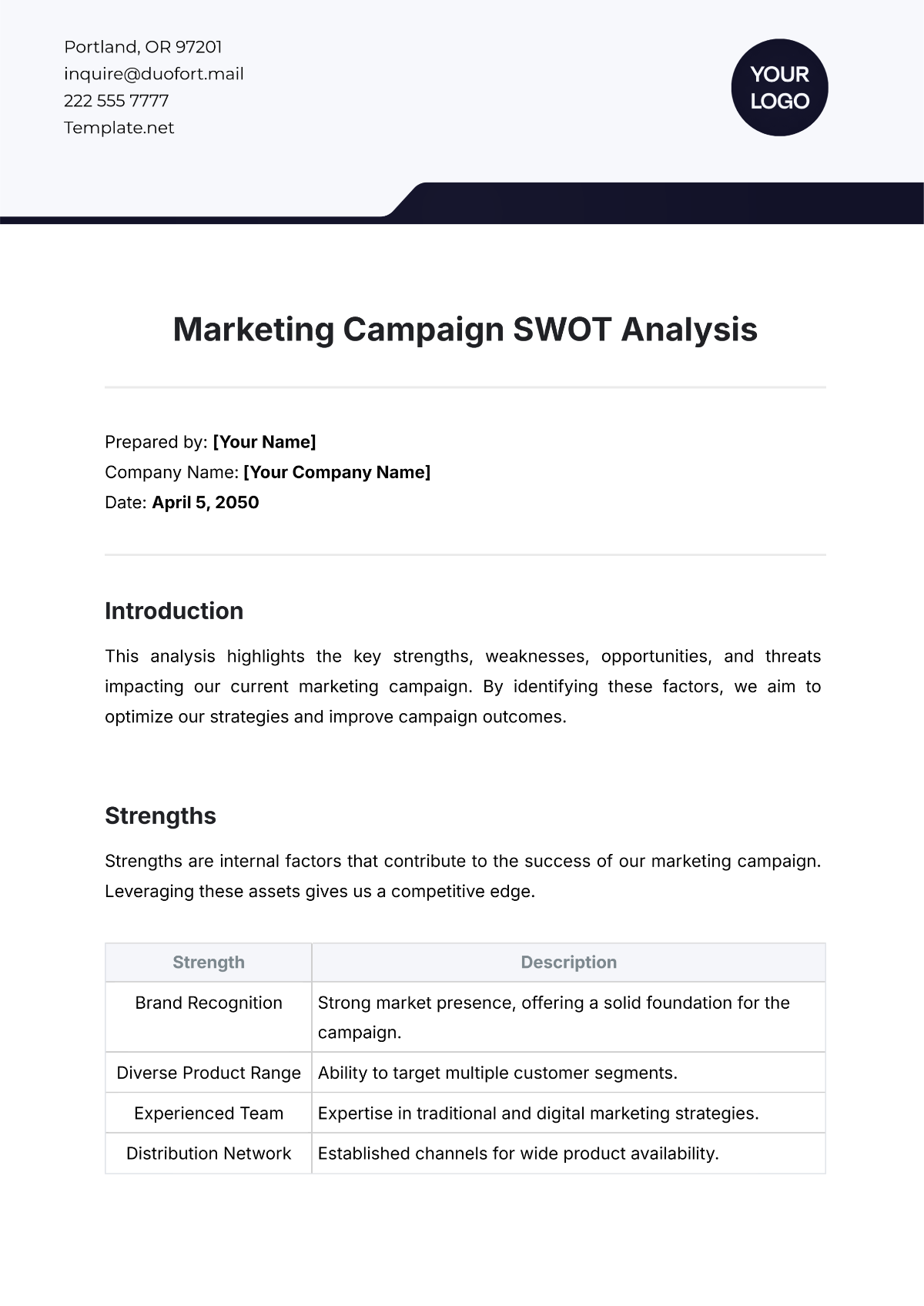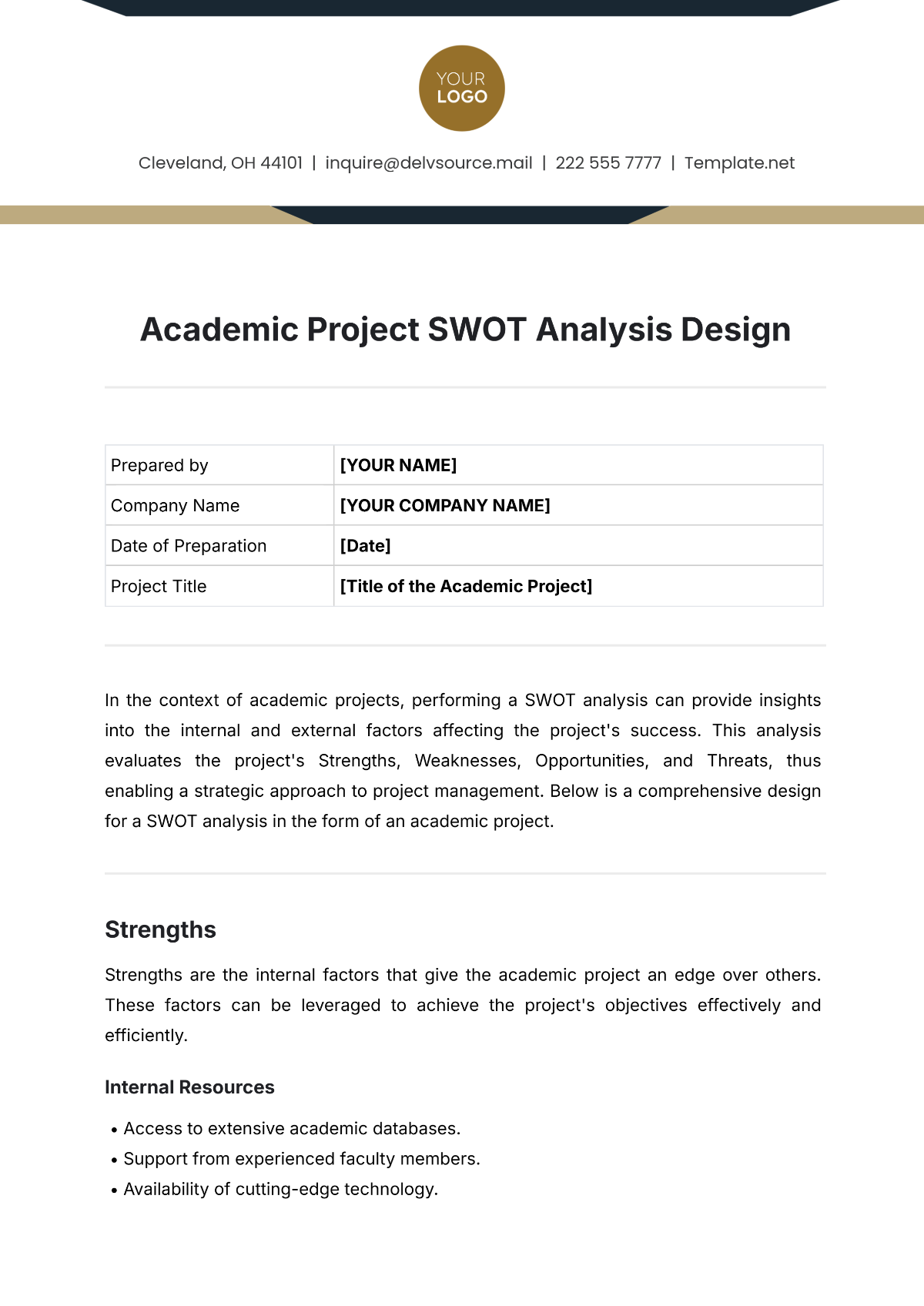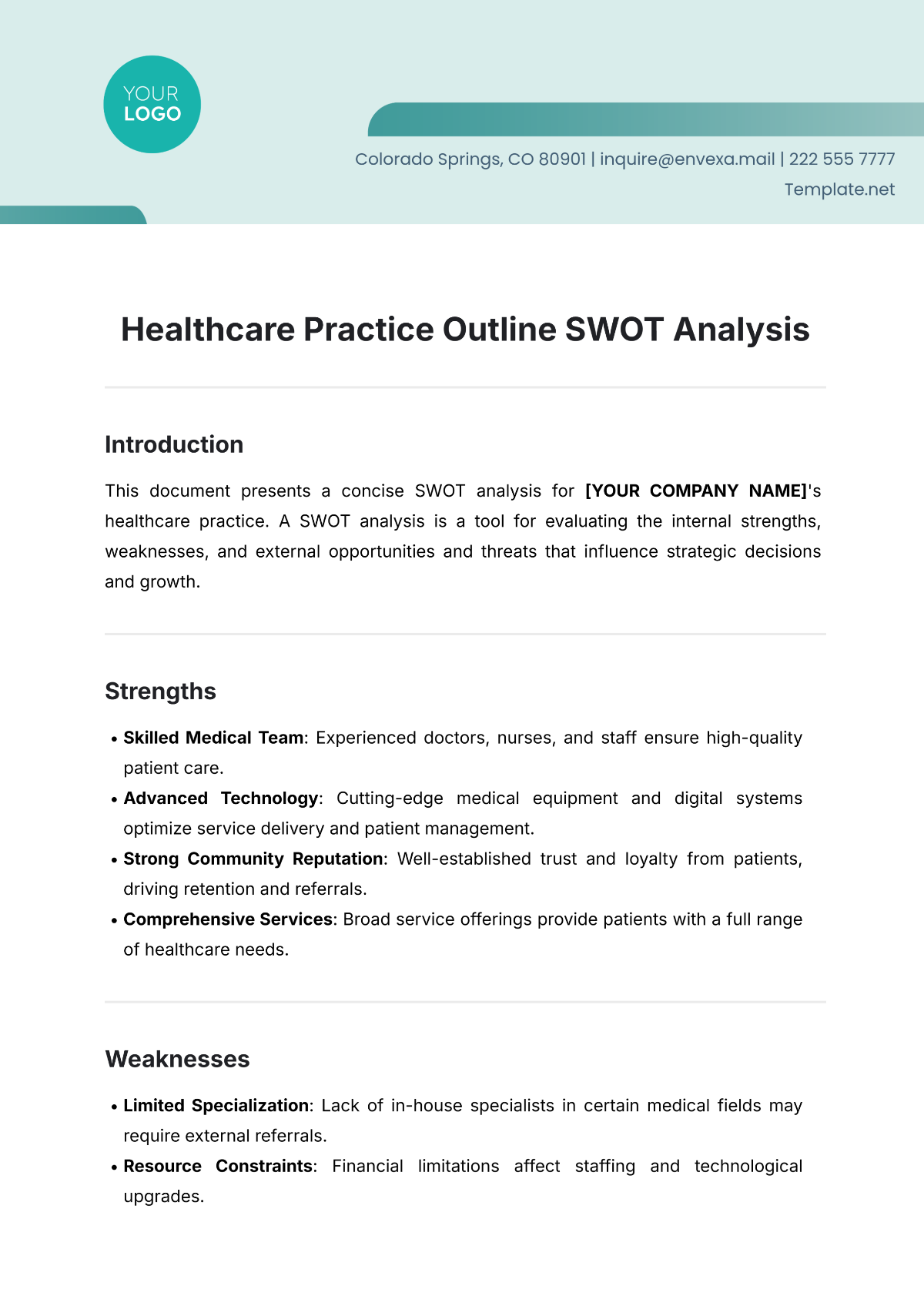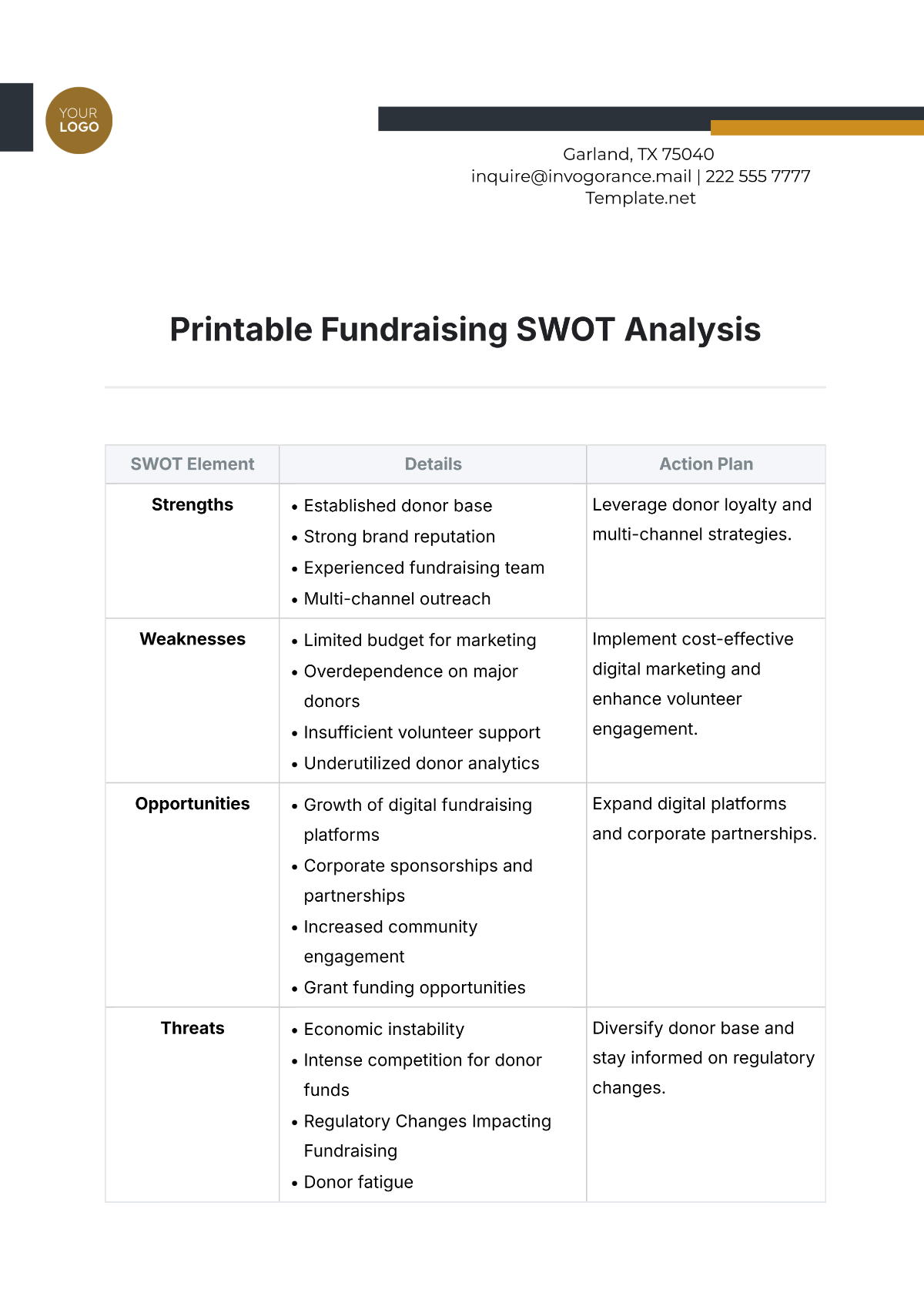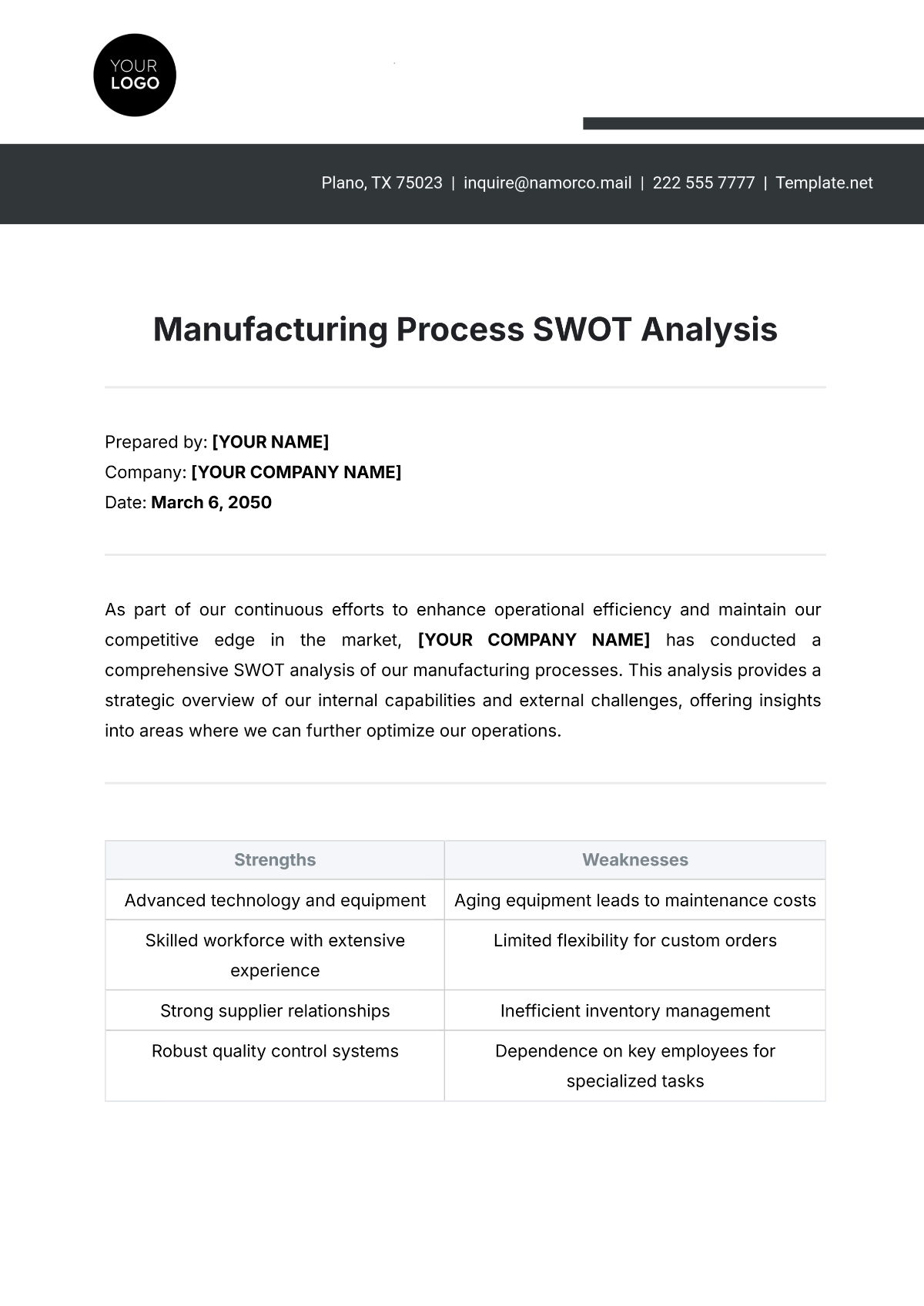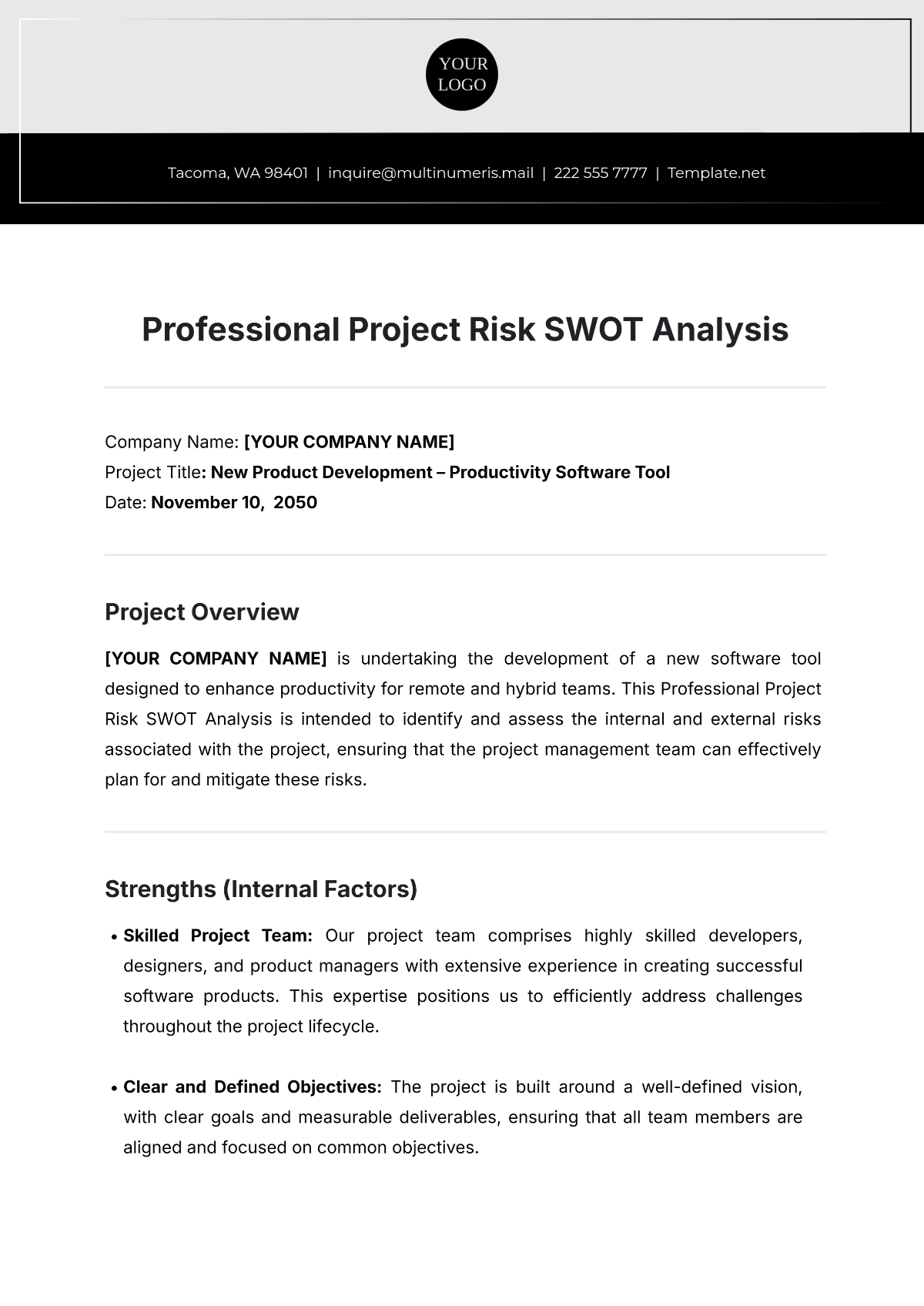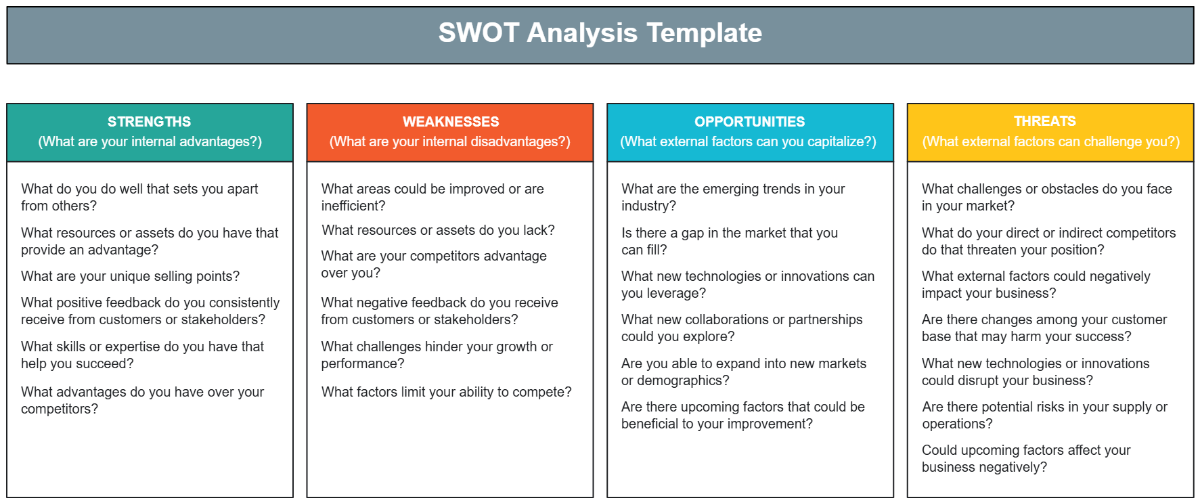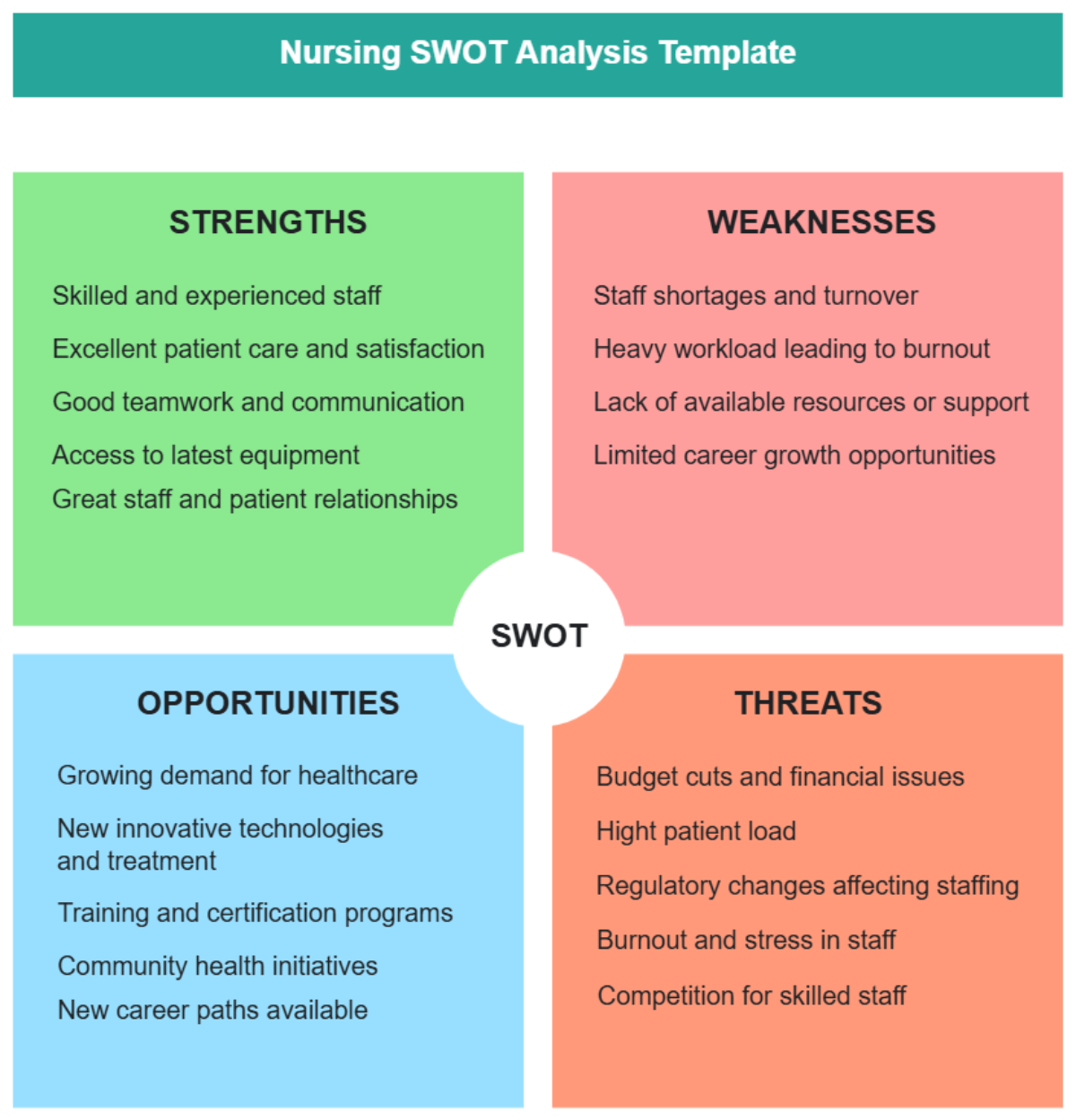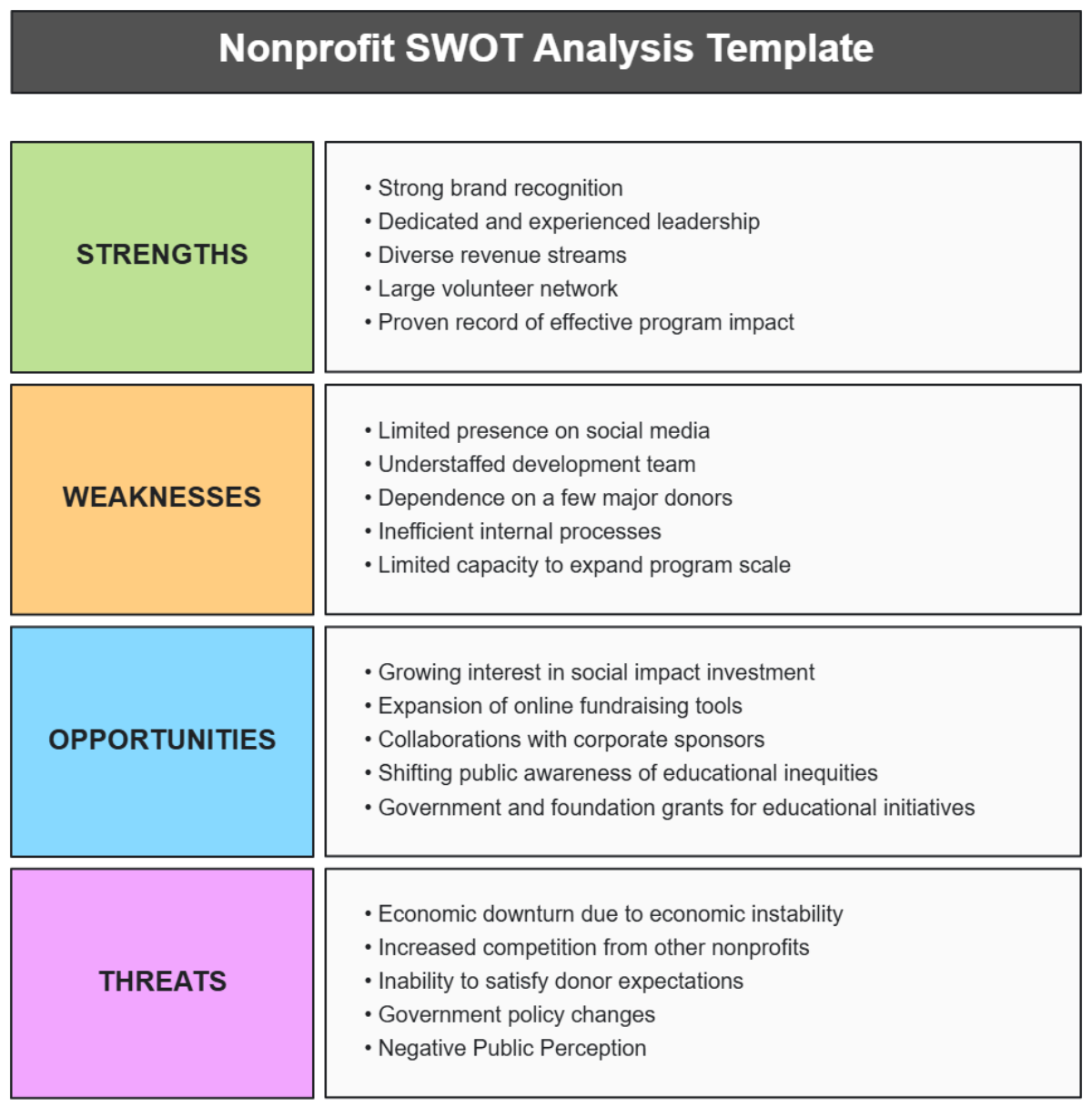Employee SWOT Analysis
Prepared By: | [Your Name] |
Company: | [Your Company Name] |
Department: | [Your Department] |
I. Introduction
In this Employee SWOT Analysis, we will explore the professional profile and career trajectory of [Your Name]. This analysis aims to provide insights into his strengths, weaknesses, opportunities, and threats within the context of his role at [Your Company Name].
II. Strengths
A. Skills and Competencies
Technical Proficiency: [Your Name] demonstrates advanced proficiency in various programming languages and software tools, such as Python, Java, and SQL.
Leadership Skills: With 5 years of experience in project management, he has consistently led teams to successful project completions.
Effective Communication: [Your Name] possesses strong communication skills, enabling him to effectively convey complex technical concepts to non-technical stakeholders.
B. Achievements and Accomplishments
Project Leadership: [Your Name] spearheaded the development of a new software application, which resulted in a 20% increase in efficiency for the company.
Employee of the Year: He was recognized as Employee of the Year in 2050 for his exceptional contributions to project success and team collaboration.
Consistent Performance: [Your Name] consistently exceeds performance targets, meeting project deadlines with high-quality deliverables.
III. Weaknesses
A. Areas for Improvement
Public Speaking: [Your Name] acknowledges the need to enhance his public speaking skills to confidently present project updates to senior management.
Time Management: He could benefit from additional time management training to prioritize tasks effectively and meet project deadlines consistently.
Conflict Resolution: [Your Name]struggles with resolving conflicts within the team, requiring further development in conflict resolution skills.
B. Development Needs
Public Speaking Training: Enrolling in a public speaking course would enhance [Your Name]'s ability to deliver presentations confidently and effectively.
Time Management Workshops: Regular attendance in time management workshops can help him improve his ability to prioritize tasks and manage project timelines effectively.
Conflict Resolution Coaching: [Your Name] should prioritize seeking coaching sessions to develop his skills in resolving conflicts within the team.
IV. Opportunities
A. Career Growth Opportunities
Leadership Roles: Given [Your Name]'s expertise in project management, he is well-positioned for leadership roles within the company.
Cross-Functional Collaboration: He could explore opportunities for cross-functional collaboration to broaden his skill set and network within the organization.
Professional Certifications: [Your Name] should consider pursuing project management certifications to enhance his career prospects and credibility.
B. Training and Development Programs
Leadership Development Program: This program focuses on developing leadership skills and preparing employees for managerial roles.
Project Management Certification: Enrolling in a project management certification course will provide [Your Name] with the necessary credentials and knowledge to excel in his field.
Communication Skills Workshop: Attending a communication skills workshop will help him improve his ability to communicate effectively with team members and stakeholders.
TABLE 1: Recommended Training Programs
Training Program | Description |
|---|---|
Leadership Development | A comprehensive program focusing on developing leadership skills and preparing employees for management roles. |
Project Management Certification | A certification course covering key principles and practices in project management. |
Communication Skills Workshop | A workshop designed to enhance communication skills, including public speaking and interpersonal communication. |
V. Threats
A. External Challenges
Market Trends: [Your Name]'s role may be impacted by shifts in market trends or changes in consumer preferences.
Economic Conditions: External economic factors could potentially disrupt project budgets or funding allocations.
Regulatory Changes: Regulatory changes in the industry may pose challenges to his current project responsibilities.
B. Industry Trends
Technological Advancements: Rapid technological advancements may require [Your Name] to continuously update his skills and knowledge to remain competitive.
Remote Work: The trend towards remote work may affect his day-to-day tasks and team collaboration processes.
Globalization: Increasing globalization may introduce new competitors and market dynamics that impact his projects and priorities.
TABLE 2: External Threats and Industry Trends
Factor | Impact | Mitigation Strategy |
|---|---|---|
Market Trends | Potential impact on project scope | Regular market analysis and adaptation of strategies |
Economic Conditions | Risk of budget constraints | Diversification of revenue sources |
Regulatory Changes | Compliance challenges | Continuous monitoring of regulatory updates |
VI. Conclusion
This Employee SWOT Analysis provides [Your Name] with valuable insights into his professional profile and career trajectory. By leveraging his strengths, addressing his weaknesses, capitalizing on opportunities, and mitigating threats, he can maximize his potential and contribute effectively to [Your Company Name].
